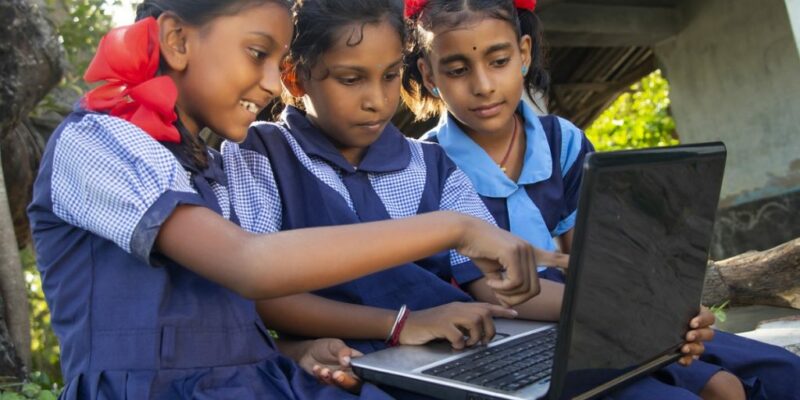India’s progress and prosperity are significantly dependent on the modernization and expansion of its educational system. The COVID pandemic altered how the world viewed education. Schools and institutions had to be shut down, and the administration was out of options to keep the learning going. The rural educational structure wasn’t performing well even before the outbreak, and the pandemic worsened the schooling gap for students in rural India.
Reasons Behind the Broadening Split
Students from vulnerable groups were severely affected by the logically protracted closure of educational establishments. The government’s ‘Digital India initiative’ is to be credited with online learning initiatives. However, this resulted in a digital divide due to lack of access and inability to use technology.
Some reasons that contribute to the digital gap in education, notably in rural areas, are:
- Accessibility: One of the main gulfs in the rural sector is the lack of internet access. Due to cost, accessibility, or both, students lack technology, internet, and software. Another major obstacle to online education is the consistent and reliable provision of power in rural places.
- Reticence: Teachers are reticent to alter their practices because they fear being replaced. With next to no training, many find it challenging to adapt to e-learning techniques.
- Inequity in education: E-learning lacks the benefit of one-on-one interactions, and students from rural backgrounds are particularly affected by the inequalities in education.
Taking on Challenges in Rural Education System
In rural India, technology is essential for enhancing quality, accessibility, and cost. Technology and infrastructure can bridge the gap given the right regulatory reform. A general paradigm that applies to everyone may not be a feasible strategy in a linguistic, culturally, and socially varied nation like India. Challenges must be dealt with as they arise because e-learning has become the new standard.
The latest educational policy is a starting step in this direction, and it will hopefully develop into one that is appropriate for India’s requirements. Investing in infrastructure and fostering intellectual resources must receive urgent and prompt priority if a collaborative environment is to be created for a more holistic educational approach. Some areas that can call for immediate action or effort include:
- Expand internet services and coverage
- Offer development and training for human resources
- Increase the accessibility of electricity
- Provide access to technology
- Give online learners access to free or affordable devices
- Students should have access to MOOCs or Massive Online Open Course
The Aim to Reshape Rural Education
Thanks to the Digital India initiative, the internet is now accessible. Although several apps are available, most of them are out of the pricing range of the average Indian family. The government institutions must provide affordable or free apps to retain the same standard as the commercial ones.
To make education more accessible and economical for every person, numerous projects are being performed simultaneously by the government, either directly or in collaboration with NGOs. Some of these projects include:
- E-Kranti: A program by the Indian government to build internet service infrastructure to narrow the digital gap across rural, remote, and metropolitan areas.
- Delivery of education via collaboration: Collaboration between NGOs and businesses promotes the switch from chalkboards to online platforms. Some of the initiatives include:
- The Learn, Out of the Box program
- Smart Class initiative
- eVidyaloka
The pandemic’s frantic drive to e-learning has renewed attention on inequality concerns owing to the already-existing digital divide. The path ahead is difficult after many years of policy inertia, and it can only be overcome by upcoming economic, educational, and digitalization measures. The fast change in the environment necessitates quick and firm intervention on the part of the government.


